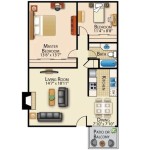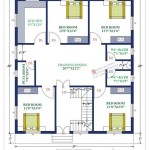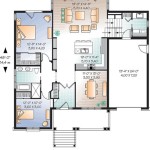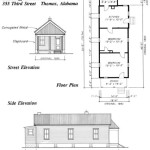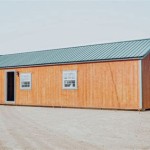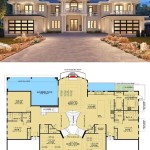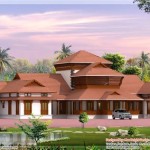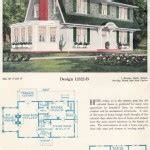A beautiful house plan is a well-designed blueprint that serves as a roadmap for constructing an aesthetically pleasing and functional home. It outlines the overall structure, layout, and key features of the house, providing a comprehensive guide for builders and contractors to follow. For instance, a charming cottage-style house plan might incorporate cozy fireplaces, vaulted ceilings, and wrap-around porches, creating a warm and inviting ambiance.
A well-crafted house plan not only enhances the beauty and curb appeal of a property but also optimizes its functionality and livability. By carefully considering factors such as space allocation, natural light, and indoor-outdoor flow, architects can create plans that seamlessly meet the needs and preferences of homeowners. With a well-designed house plan, homeowners can build a house that not only reflects their personal style but also provides a comfortable and enjoyable living space for years to come.
In the following sections, we will delve deeper into the key elements of a beautiful house plan, exploring its essential features, design principles, and considerations for creating a home that is both aesthetically pleasing and practically functional.
A beautiful house plan encompasses several key elements that contribute to its aesthetic appeal and functionality:
- Curb Appeal
- Functional Layout
- Natural Light
- Indoor-Outdoor Flow
- Energy Efficiency
- Smart Home Features
- Customization
- Budget Considerations
These factors, when thoughtfully considered and integrated into the design process, result in a house plan that not only meets practical needs but also creates a visually stunning and comfortable living space.
Curb Appeal
Curb appeal refers to the attractiveness of a house from the street view. It encompasses the overall appearance and design elements that create a positive first impression on visitors and potential buyers. A well-designed house plan should prioritize curb appeal by incorporating features that enhance the home’s visual appeal and create a welcoming ambiance.
One key aspect of curb appeal is the home’s exterior design. The choice of architectural style, materials, and colors should complement the surrounding neighborhood and reflect the homeowner’s personal taste. For instance, a traditional brick facade with white trim and black shutters exudes a classic charm, while a modern home with clean lines, large windows, and a sleek color palette conveys a contemporary aesthetic.
Landscaping also plays a crucial role in enhancing curb appeal. Thoughtfully placed trees, shrubs, and flowers can frame the house, add pops of color, and create a sense of depth and dimension. A well-maintained lawn and manicured hedges further contribute to a polished and inviting exterior.
Other elements that enhance curb appeal include outdoor lighting, pathways, and driveways. Strategically placed lighting can highlight architectural features and create a warm and welcoming ambiance in the evenings. Pathways and driveways should be designed to complement the home’s exterior and provide easy access for visitors. By carefully considering these elements, homeowners can create a house plan that not only meets their functional needs but also makes a lasting impression on all who approach it.
Functional Layout
A functional layout is essential for creating a house plan that not only looks beautiful but also meets the practical needs of its occupants. It involves carefully arranging the rooms and spaces within the house to maximize functionality, comfort, and flow.
One key aspect of a functional layout is the relationship between different rooms. The kitchen, dining room, and living room should be positioned in close proximity to each other to facilitate easy movement and interaction. Similarly, bedrooms and bathrooms should be grouped together to create private and restful zones.
Another important consideration is traffic flow. The layout should minimize unnecessary hallways and bottlenecks, allowing for smooth and efficient movement throughout the house. Wide hallways and doorways ensure that furniture and large objects can be easily moved, while clear sightlines promote a sense of spaciousness and openness.
The size and shape of each room should also be carefully considered. The kitchen should be large enough to accommodate appliances, storage, and meal preparation, while the living room should be spacious enough to comfortably accommodate furniture and seating. Bedrooms should be designed to provide a restful and private retreat, with adequate space for beds, dressers, and other furniture.
By carefully considering these factors, architects can create house plans that not only meet the functional needs of homeowners but also enhance their overall quality of life. A well-designed layout promotes efficiency, comfort, and a sense of harmony throughout the home.
Natural Light
Natural light plays a vital role in creating a beautiful and healthy living environment. A well-designed house plan should maximize natural light to enhance the overall ambiance of the home and provide numerous benefits for its occupants.
- Improved Mood and Well-being
Exposure to natural light has been scientifically proven to boost mood, reduce stress, and improve overall well-being. Studies have shown that people who live in homes with ample natural light experience higher levels of serotonin, a neurotransmitter associated with happiness and contentment.
- Reduced Energy Consumption
Natural light can significantly reduce the need for artificial lighting during the daytime, leading to lower energy consumption and cost savings. By incorporating large windows and skylights into the house plan, homeowners can harness natural light to illuminate their homes, reducing their reliance on electricity.
- Enhanced Aesthetics
Natural light creates a warm and inviting atmosphere within the home. It highlights architectural features, adds depth and dimension to rooms, and makes colors appear more vibrant. A well-lit home is not only more visually appealing but also feels more spacious and airy.
- Health Benefits
Exposure to natural light has been linked to improved sleep patterns, reduced eye strain, and a stronger immune system. Sunlight provides essential vitamin D, which is crucial for bone health and overall well-being.
To maximize natural light in a house plan, architects consider factors such as window placement, orientation, and the use of skylights and light tubes. By carefully positioning windows and incorporating reflective surfaces, they can ensure that natural light penetrates deep into the home, creating bright and inviting spaces.
Indoor-Outdoor Flow
Indoor-outdoor flow refers to the seamless connection between the interior and exterior spaces of a house. A well-designed house plan should incorporate features that encourage interaction between these two realms, creating a sense of spaciousness and bringing the beauty of nature into the home.
One key aspect of indoor-outdoor flow is the use of large windows and doors. Floor-to-ceiling windows and sliding glass doors provide expansive views of the outdoors, blurring the boundaries between the interior and exterior. By opening these doors and windows, homeowners can create a seamless transition between the two spaces, allowing for natural ventilation and an abundance of natural light.
Another important element of indoor-outdoor flow is the design of outdoor living areas. Patios, decks, and balconies extend the living space beyond the walls of the house, providing additional areas for relaxation, dining, and entertaining. These outdoor spaces should be carefully designed to complement the interior of the home, creating a cohesive and inviting environment.
Landscaping also plays a crucial role in enhancing indoor-outdoor flow. Thoughtfully placed trees, shrubs, and water features can create a sense of privacy and tranquility in outdoor areas. By incorporating natural elements into the design, homeowners can create a seamless transition between the built environment and the surrounding landscape.
A well-designed indoor-outdoor flow not only enhances the aesthetic appeal of a home but also provides numerous benefits for its occupants. It creates a more spacious and inviting living environment, promotes natural ventilation and lighting, and provides opportunities for relaxation and connection with nature. By carefully considering these factors, architects can create house plans that seamlessly blend the indoors and outdoors, creating a truly harmonious and enjoyable living space.
Energy Efficiency
Energy efficiency is a crucial consideration in modern house design, as it not only reduces the environmental impact of a home but also provides significant cost savings for homeowners. A well-designed house plan should incorporate features that enhance energy efficiency, resulting in a more sustainable and economical living space.
- Insulation
Proper insulation is essential for reducing heat loss in the winter and heat gain in the summer. A well-insulated home requires less energy to maintain a comfortable indoor temperature, leading to lower energy bills and a more environmentally friendly home.
- Windows and Doors
Energy-efficient windows and doors are designed to minimize heat transfer, reducing the amount of energy needed for heating and cooling. Look for windows and doors with high Energy Star ratings and features such as double or triple glazing, low-e coatings, and insulated frames.
- Appliances and Lighting
Energy-efficient appliances and lighting can significantly reduce energy consumption. Choose appliances with Energy Star certification, which indicates that they meet strict energy efficiency standards. LED lighting is also highly energy-efficient and lasts longer than traditional incandescent bulbs.
- Renewable Energy Sources
Incorporating renewable energy sources such as solar panels or geothermal heating and cooling systems can further enhance the energy efficiency of a home. These systems can generate clean energy, reducing reliance on fossil fuels and lowering energy costs.
By carefully considering these factors and incorporating energy-efficient features into the house plan, architects can create homes that not only look beautiful but also minimize energy consumption and promote sustainable living. Energy-efficient homes are not only better for the environment but also provide significant financial benefits for homeowners over the long term.
Smart Home Features
Smart home features are increasingly becoming an integral part of beautiful house plans, offering homeowners a wide range of benefits, including convenience, security, energy efficiency, and enhanced comfort. These features seamlessly integrate technology into the home’s design, creating a truly intelligent and responsive living environment.
One of the most popular smart home features is voice control. Homeowners can use smart speakers or voice assistants to control various devices and systems in their homes, such as lighting, thermostats, and entertainment systems. This hands-free control provides unmatched convenience, allowing homeowners to manage their homes with simple voice commands.
Smart home security systems offer enhanced protection and peace of mind. These systems include sensors that detect motion, smoke, and water leaks, and can send alerts to homeowners’ smartphones or trigger alarms. Smart locks allow homeowners to lock and unlock their doors remotely, and can be integrated with security cameras to provide a comprehensive view of their property.
Smart home features also contribute to energy efficiency. Smart thermostats can learn homeowners’ heating and cooling preferences and adjust temperatures accordingly, reducing energy consumption and lowering utility bills. Smart lighting systems can automatically adjust lighting levels based on natural light availability and occupancy, further saving energy.
In addition to these practical benefits, smart home features can also enhance the overall ambiance and enjoyment of a home. Smart entertainment systems provide immersive audio and video experiences, while smart appliances can automate tasks such as cooking and laundry, freeing up homeowners’ time for more enjoyable activities.
Customization
Customization is a key aspect of a beautiful house plan, allowing homeowners to create a home that truly reflects their unique style, needs, and preferences. A well-designed house plan provides ample opportunities for customization, empowering homeowners to tailor their homes to suit their specific tastes and lifestyles.
- Floor Plan
The floor plan is the foundation of a house plan, and it can be customized to accommodate a wide range of needs and preferences. Homeowners can choose from a variety of pre-designed floor plans or work with an architect to create a custom floor plan that perfectly suits their lifestyle. Factors to consider include the number of bedrooms and bathrooms, the size and layout of the kitchen and living areas, and the flow of traffic throughout the home.
- Exterior Design
The exterior design of a home is another important area for customization. Homeowners can choose from a variety of architectural styles, materials, and finishes to create a home that reflects their personal taste and complements the surrounding neighborhood. Factors to consider include the roofline, siding, windows, and doors, as well as outdoor features such as patios, decks, and landscaping.
- Interior Design
The interior design of a home offers endless possibilities for customization. Homeowners can choose from a variety of color schemes, furniture styles, and decorative elements to create a home that feels both beautiful and comfortable. Factors to consider include the overall style of the home, the size and shape of the rooms, and the amount of natural light available.
- Smart Home Features
Smart home features are becoming increasingly popular, and they offer a wide range of customization options. Homeowners can choose from a variety of smart devices and systems to create a home that is both convenient and energy-efficient. Factors to consider include voice control, security systems, smart lighting, and smart appliances.
By carefully considering these factors and working with an experienced architect or designer, homeowners can create a beautiful house plan that is tailored to their unique needs and preferences. Customization empowers homeowners to build a home that not only meets their practical requirements but also reflects their personal style and aspirations.
Budget Considerations
Budget considerations play a crucial role in determining the scope and feasibility of a beautiful house plan. It is important to establish a realistic budget at the outset to avoid overspending and ensure that the project can be completed within the desired timeframe. Several key factors need to be taken into account when planning the budget for a beautiful house plan:
- Land Cost
The cost of land can vary significantly depending on the location, size, and topography of the property. It is important to research land prices in the desired area and factor in the cost of site preparation, such as clearing, grading, and utilities.
- Construction Costs
Construction costs include the materials, labor, and permits required to build the house. The cost per square foot will vary depending on the size, complexity, and quality of the home. It is important to obtain bids from multiple contractors and compare their estimates to ensure a competitive price.
- Design Fees
Hiring an architect or designer to create a custom house plan will incur design fees. These fees are typically a percentage of the construction costs and cover the architect’s time and expertise in designing the home. The complexity of the design and the experience of the architect will influence the design fees.
- Permits and Inspections
Building permits and inspections are required to ensure that the house is built according to code and is safe for occupancy. The cost of permits and inspections will vary depending on the size and complexity of the home, as well as the local building codes.
By carefully considering these factors and planning a realistic budget, homeowners can ensure that their beautiful house plan is not only aesthetically pleasing but also financially feasible. It is important to work closely with an experienced contractor and architect to develop a budget that meets the desired design goals while staying within the established financial constraints.










Related Posts

